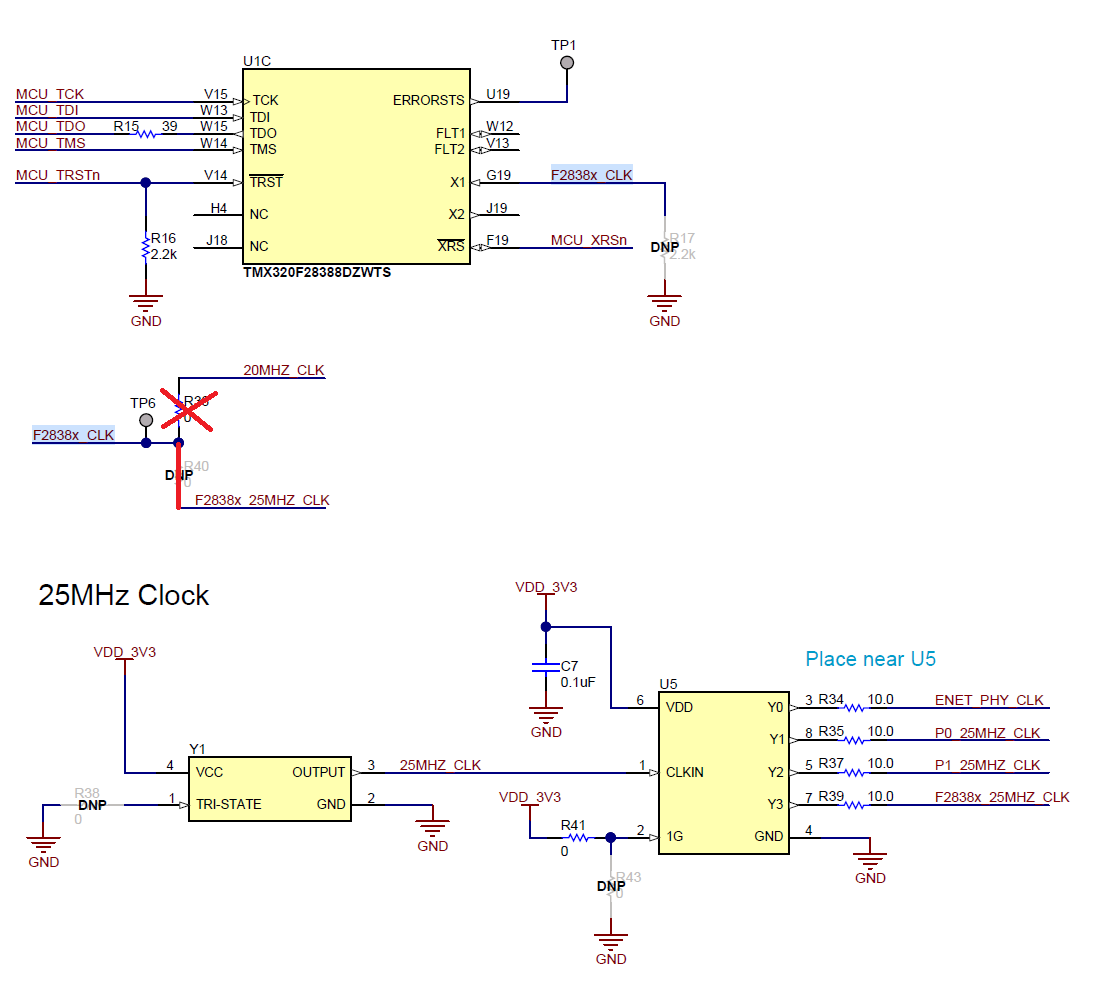Other Parts Discussed in Thread: TMDXCNCD28388D, C2000WARE
Hello,
I am using TI Eval board (TMDXCNCD28388D) with F28388D processor. The input clock is configured as 25MHz (0-ohm resistor selector changed from default 20MHz (R36 removed, R40 added). Requested SysCLK frequency is 200MHz. I found that using different PLL settings (REFDIV,ODIV,IMULT) I get clock frequency close to requested 200MHz but frequency error strongly depends on PLL setting. Error vary from 0.6% to 3.4%.
For verification I have used two independent methods:
1. Toggle GPIO (1 toggle per n-th PWM periods) to measure frequency using osciloscope.
2. Using DCC - code is from C2000Ware examples (compare input to output clock frequency ratio.)
Each time I get correlated results from both methods - in this way I claim error not come from verification error and does not depends on input clock.
Moreover, the best results I get so far was with severe specification violation (INTCLK=5MHz or lower).
Example settings I have applied:
1.
REFDIV=0x04;
IMULT=0x50;
ODIV = 0x00;
SYSCLK_DIV = 0x01;
which results in error ~0.8%
2.
REFDIV=0x01;
IMULT=0x10;
ODIV = 0x00;
SYSCLK_DIV = 0x00;
which results in error ~1.5%
Questions:
1. Where this error come from?
2. Why frequency error depends on PLL settings?
3. Are there any known issues with clock/PLL circuitry on Evaluation Board?
Best Regards,
Milosz Przybylowicz















